Mineral Formation and Structure
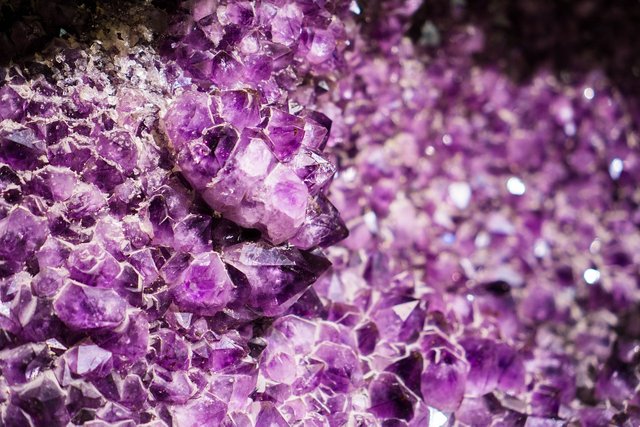
Image source:pixabay
If you go outside and pick up the nearest rock, what are you holding in your hand? You might answer that you are holding in your hand? You might answer that you are holding part of the earth's crust. You might add that the rock is made up of certain element that's found in the earth's crust. What you probably don't know is that the elements in the rock are arranged in certain patterns.
Characteristics of Minerals
Most rocks contain more than one mineral. Each mineral may be scattered in to smaller pieces to small for the eyes to see. In other rocks, the mineral particles are visible as large specks. Some rocks are chunks of just one mineral.
There are over 2,000 different kinds of minerals in the earth's crust, but all of them share five characteristics. This characteristics can be stated in one definition. A mineral is a natural, inorganic solid with definite chemical composition and a particular crystalline structure. The following explanation tells more about these characteristics.
A mineral is formed in nature.
Minerals come from the earth's crust, not from the laboratory or factory. When people chemically change materials from earth's crust, they are no longer minerals. For example, glass and concrete are not minerals, even though they are made from substances that originally came from minerals.A mineral is inorganic.The word inorganic used to describe things not made of living matter or matter produced by living things. Wood is not a mineral because it comes from trees. Coal is not a mineral because it is formed from the remains of plants.
A mineral is a solid.Minerals most be solid so their atoms can form characteristics patterns. Magma is a natural substance found in the earth, but it is not a mineral because it is not a solid.
A mineral has a definite chemical composition.
A mineral always contains the same elements in the same proportions. A chemical formula never changes. The mineral quartz, for example, is always made up of two oxygen atoms for every silicon atom. The chemical formula for quartz is SiO2. Some minerals are exceptions to this rule because the amounts or kind of elements in their makeup can vary. But chemical formulas for these minerals can still be written because the variations are within certain limits.A mineral has a particular crystalline structure.The atoms of a mineral are arranged in a way that forms a particular geometric shape, or crystal. Each mineral always has the same crystalline structure. mineral crystals are usually too small to be seen without a microscope.
Mineral Formation
Minerals are formed slowly by two natural processes. In the first process, melted rock, or magma, cools to form solid mineral crystals. In the second process, water containing dissolved minerals evaporates, leaving behind mineral crystals.
Cooling Of Magma
Recall that in the asthenosphere, much of the earth's rocky material is hot and partially liquid. some of this magma works its way upward through cracks in the crust, where it collects and cools. During the cooling process, atoms in the magma rearrange. They begin to "lock" into place, forming crystals. The chemical makeup of the magma determines the magma cools determines the size of the mineral crystals. Slow cooling produces large crystals, and rapid cooling produces small crystals.
Precipitation
Minerals dissolved in liquids from mixtures called solutions. When the liquid part of a mineral containing solutions evaporates, the minerals are left behind. The process is called precipitation.
The largest mineral solution on the Earth is the ocean. The ocean contains the compound sodium chloride forms the mineral halite. Other compounds dissolved in the ocean water from other minerals through precipitation. Minerals also precipitate from hot springs, geysers, springs, and streams.
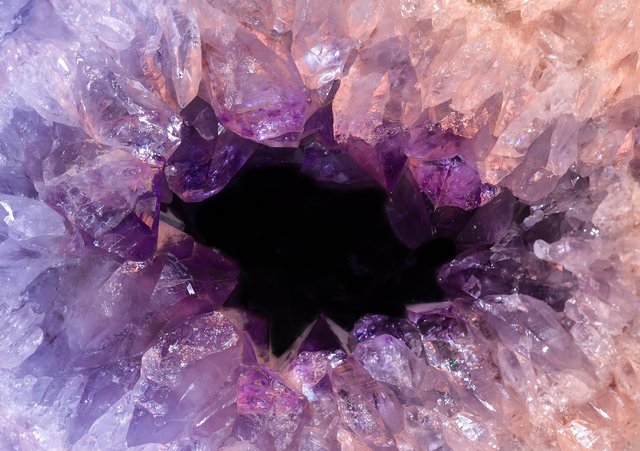
Mineral Composition
Each mineral has its own composition and unique chemical makeup. However, there chemical similarities among many of the most common minerals contain the elements silicon(Si) and oxygen(O). Earth scientists group these minerals together and call them the silicate minerals. In a similar way, some minerals contain the elements of carbon and oxygen to form a carbonate group. Minerals containing the carbonate group carbonate minerals
Major Mineral Groups
Silicates (Si + O + one or more metals)
Examples: Quartz, feldspar, dioptase, mica, topaz, olivine.
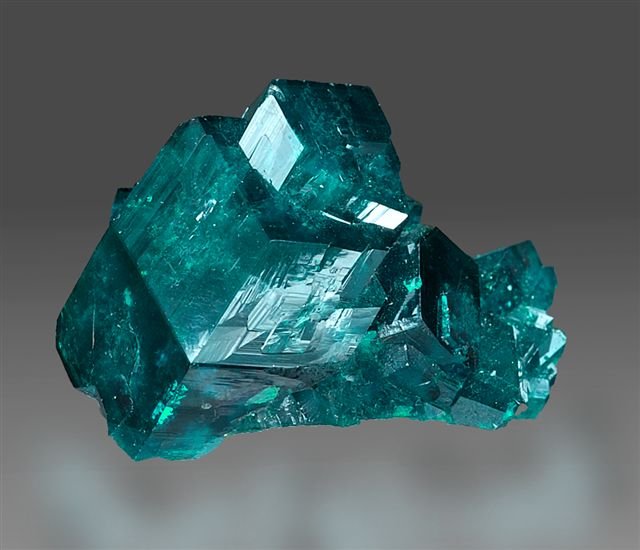
Image source:wikimedia commons
DioptaseCarbonates (CO3 + one or more metals
Examples: calcite, dolomite, siderite) rhdochrosite.
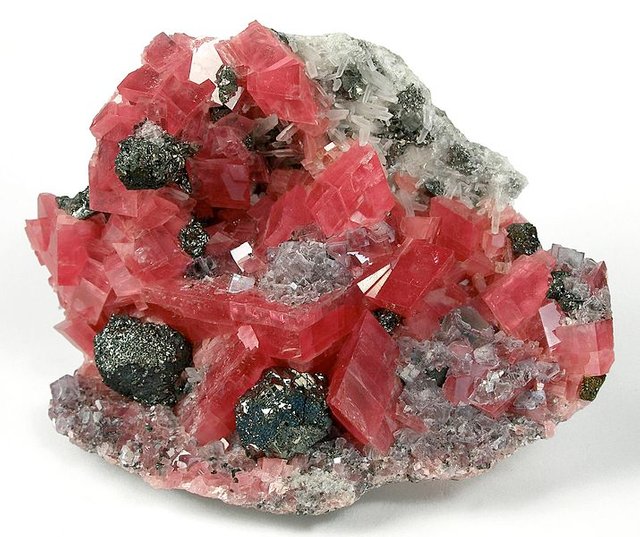
Image source:wikimedia commons
RhodochrositeOxides (O + one or more metals)
Examples: magnetite, hematite, corundum.
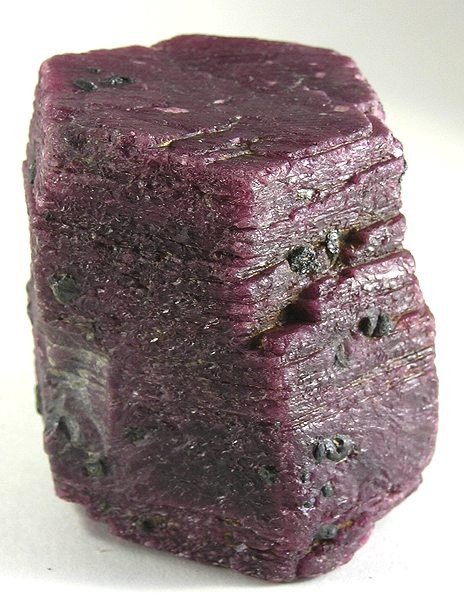
Image source:wikimedia commons
corundumSulfates (SO4 + one or more metals).
Examples: gypsum, barite
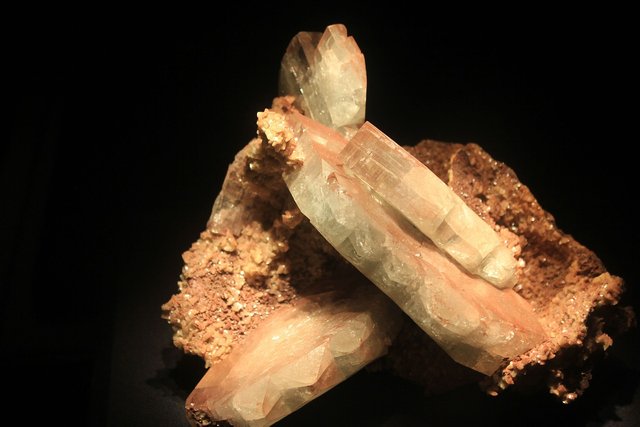
Image source:max pixel
bariteSulfides(S + one more metals)
Examples: galena, sphalerite, bornite.
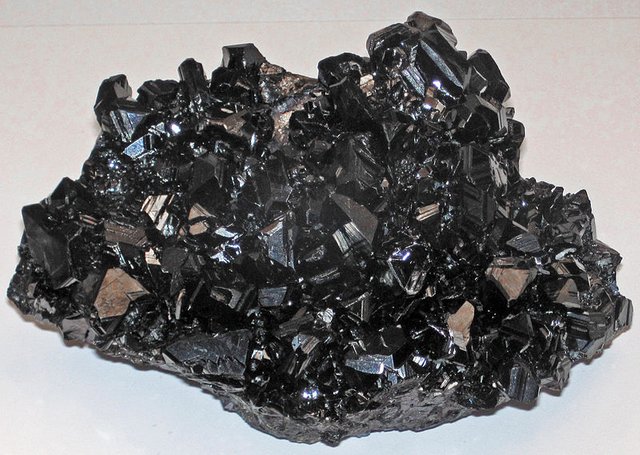
Image source:wikimedia commons
sphaleriteHalides(Cl or F + a metal)
Examples: halite, fluorite.
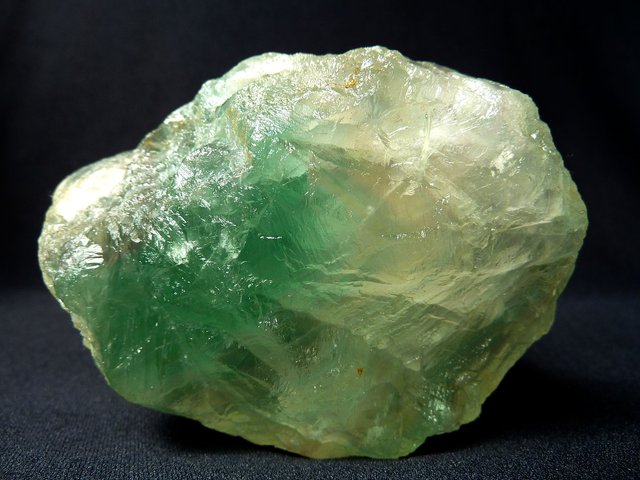
Image source:pixabay
fluoriteCrystal Structure
The crystal shapes of most of the earth's minerals are classified into six different groups. Each group of crystal shapes is called a crystal system. Each Crystal system is defined by a certain arrangement of three or four lines called axes. Each axis represents one dimension of the crystal's three-dimensional shape. The relationship of the axes to one another determines the three-dimensional shape. Crystal shape is determined by the arrangement of the atoms that make up a mineral. A mineral's characteristics crystal shape is the most stable way its atom can arrange. The shape of a mineral's crystals is the same no matter how large they are. Sometimes crystals become very large, so the crystalline arrangement is easy to see. These beautiful minerals are valuable because they are rare. However, most crystals are very small. Some are so small that microscopes or X-rays are needed to reveal the crystal's pattern.
Conclusions
Minerals are one of the gift of nature to man, they are very unique and precious. They are also very applicable to all we use in our daily lives. If you read the labels on the food products and vitamins, you may know that minerals are a necessary part of your diet. Although minerals our body needs is not the same with the minerals you've just read about, what our body needs are just certain elements that come from minerals, such as iron, calcium, phosphorus, and iodine.
References.
You got a 2.18% upvote from @postpromoter courtesy of @sammyutd!
Want to promote your posts too? Check out the Steem Bot Tracker website for more info. If you would like to support the development of @postpromoter and the bot tracker please vote for @yabapmatt for witness!
Hi,
I see that you are creating great content and I am sad that it took me a whole month to stumble upon you. I now follow so I won't miss the next one.
Have you ever thought about using #geology for your Earth Science related posts? That way, for example, our ways would have crossed sooner.
Aiit, I've taken note of that, I'll surely use geology next time
Awesome, I am looking forward to your next post :)